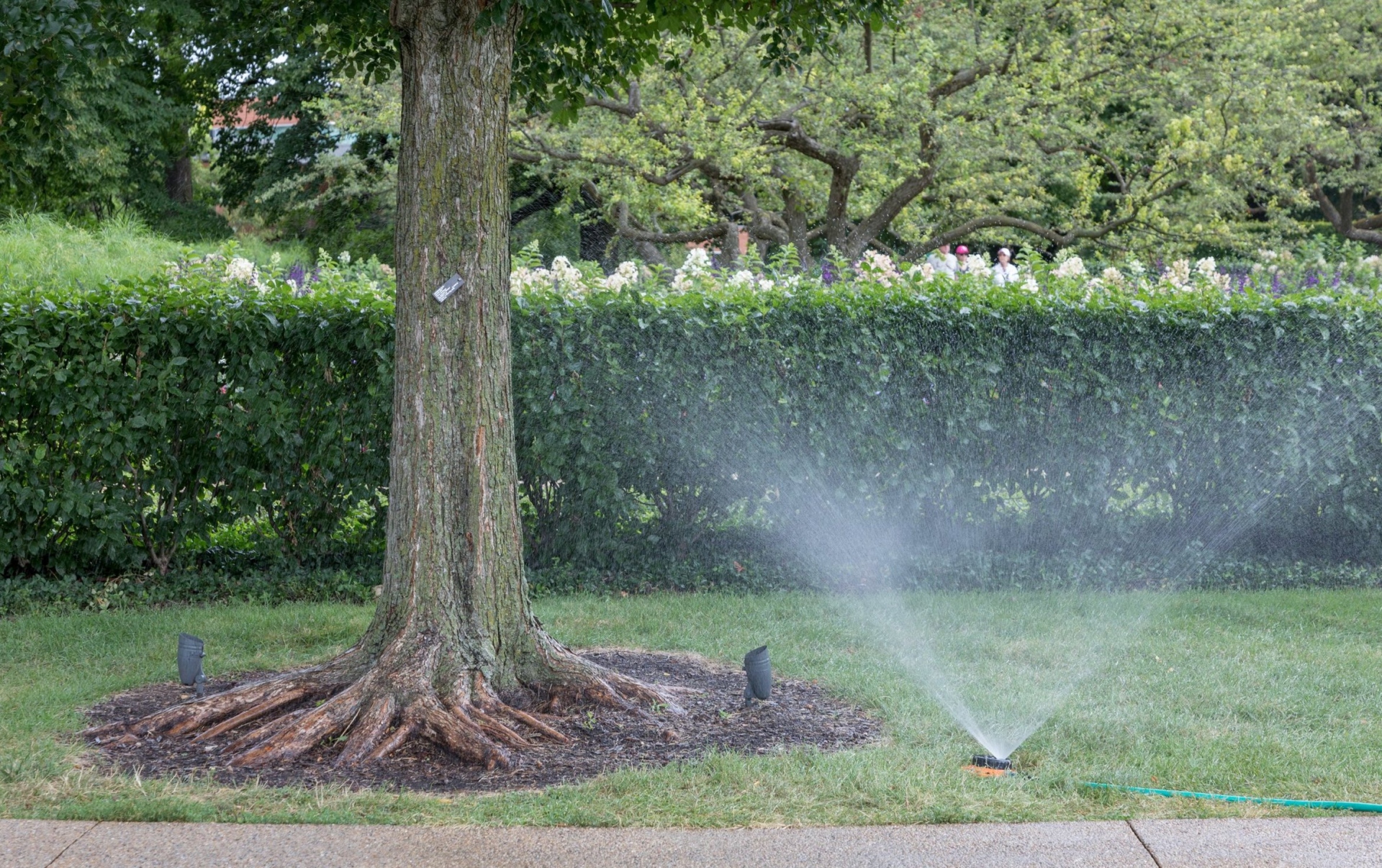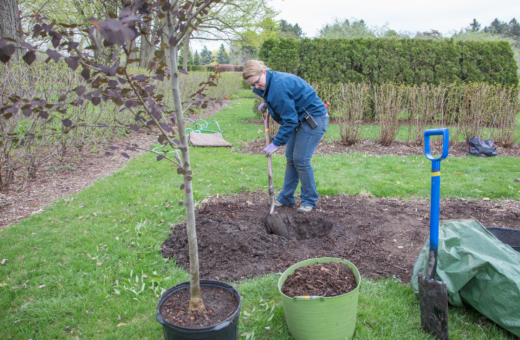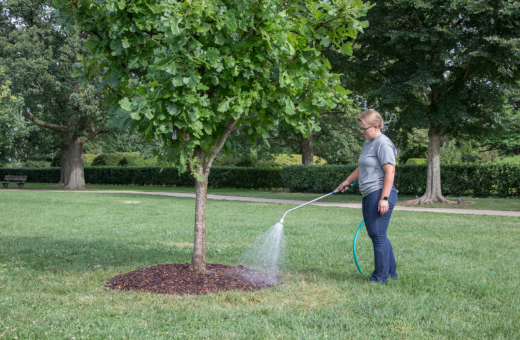Blog Post
June 22, 2021
Helping trees and plants survive drought
I hardly ever get the chance to say the words “dry” and “spring” in the same sentence because a dry spring is a rare thing in northern Illinois. But it was abundantly clear that we were in a drought this past spring: April and May in 2020 gave us 12.61 inches of rain; 2019 gave us 15.17 inches; and 2021 gave us a mere 4.43 inches. We entered the summer of 2021 in a serious water deficit.
This brings me to the topic of watering. The Plant Clinic at The Morton Arboretum has received numerous emails and calls about plants with yellow leaves. This can be caused by a nutrient deficiency, but with the dry weather we have been having, the first thing I ask is, “Have you watered the plant?” If the answer is yes, then I ask “How often and how much?”
Some people are not watering at all, because they are not used to spring being dry and are not in the habit of watering until the heat of summer.
When you do water, you need to do it right. Here are some suggestions for watering right:
Containers may need to be watered every day. Almost nothing else does. Newly planted plants need to be checked every day to see if the soil is dry, but generally don’t need to be watered every time they are checked. When the soil is drying a bit, water thoroughly to get water to the whole root system. Shallow watering leads to weak, shallow root systems.
Use the watering device right. There are a lot of good devices for watering, but if they are not used right, they don’t give good results.
- Soaker hoses are great because they keep the leaves dry and deliver water right to the soil. Unfortunately, many people don’t run them long enough. Soaker hoses deliver water very slowly and may need to be run for an hour or two to really do the job. After watering, dig a little hole, and if the soil is not moist 5 to 6 inches deep, run it longer.
- Root feeders, with their long needles, are great because you can stick them in the soil and go do something else. You just need to move them around from time to time to get good coverage of the root system. The holes that deliver the water are at the lower end of the needle and often the needle gets inserted into the soil too deep. Even most big trees have their roots in the top 18-24 inches. If you plunge that needle into the soil deeply, you are missing a lot of the root system. Insert it so that the tip of the needle is only 4 to 6 inches deep to put it into an active part of the root zone.
- Lawn sprinklers/in-ground irrigation systems are handy because they cover a large area and you can do other things while they are working. Like soaker hoses, be sure to run them long enough to water deep enough. The next time you turn on the lawn sprinkler, put out a soup or tuna can and see how long it takes to get 1 inch.
- Irrigation bags are great for newly planted trees and shrubs. Fill the bag and the water comes out slowly through the bottom of the bag right into the root ball, exactly where you want it. These bags are not meant to be full all the time. Fill them every five to seven days.
Even mature trees can benefit from watering. Many people assume that trees have roots that go down several feet. Most trees, even large mature ones, have the majority of their roots in the top 18 to 24 inches. They have wide-spreading root systems to get enough water to sustain the tree. While that is better than the root system under perennials, tree roots need to supply water to a very large organism. If some of the roots are in dry soil, they are not contributing to the water supply, and that tree is not going to get as much water as it should. That means the tree is under stress.
Watering can be expensive, but it is an investment in the future of your trees and shrubs. Watering a tree not only sustains it for today, it helps it produce a full canopy of leaves next spring. Mid-summer is the time when many of our trees produce buds that will open into leaves in spring. If there is not enough water, the trees may set a smaller number of buds, or the buds may not develop as well as they should. That could impact how well the tree leafs out next year.
The key to healthy trees and plants is understanding the challenges of every season and learning to adjust your care plans accordingly.
For more on this topic, see: Proper Watering Keeps Plants Healthy



